1960 Porsche 356B Roadster: A family affair

My dad, John Klockau, is the reason I’m a car nut, and indirectly responsible for this column today. We’ve always liked cars. The whole family. Dad’s first car was a 1965 Mustang convertible. Sure, it had the six cylinder, but it was red! Mom’s first car was a 1959 Dodge Custom Royal Lancer two-door hardtop, followed with a copper 1960 Impala two-door hardtop, then a Diamond Blue 1968 Mustang two-door hardtop. Later on Dad had a new Grabber Yellow Boss 302. My Uncle Chris turned my grandma Ruby’s former 1959 Pontiac Catalina into a street machine. As my Uncle Dave, who once had a 1969 Porsche 912 Targa that my dad sold him (that’s a story for another time) related, “Chris, being the first of my brothers to ‘go gear head,’ hot-rodded it up with Tri-Power and headers and it became the Purple Dragon. I know it had a magneto because when he would pull up in the driveway our TV signal would go squirrelly. All of a sudden Captain Ernie’s face would melt …” (If you don’t know who Captain Ernie was, he was a local TV legend.)
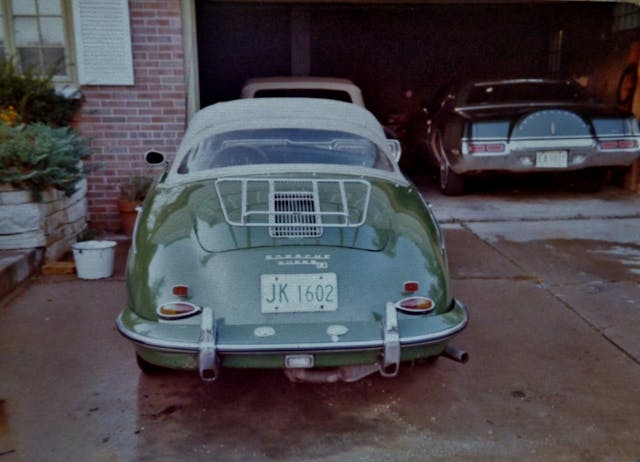
My Aunt Bobbie had a BMW 503 Cabriolet around that time. And yes, I understand that is a remarkably rare car. And yes, I’m sure that’s what she owned.

Later on, my Uncle Ron had a Capri in bright red with a black vinyl roof and stick shift. My grandma Ruby replaced the ’59 Cat with a new ’65 Thunderbird convertible in navy blue, and my Grandpa Bob had a succession of Buick sedans before moving up to a new hunter green ’66 Lincoln Continental.

But back to that Boss 302. Dad got it as a high school graduation gift. That was quite a gift, but not too long after that he started getting interested in little European sports cars and roadsters. The first one was a ’65 Triumph TR4. I don’t know all the details, but it seems that it had mechanical issues a little too frequently for his taste. So the TR4 went away and he got his first Porsche.
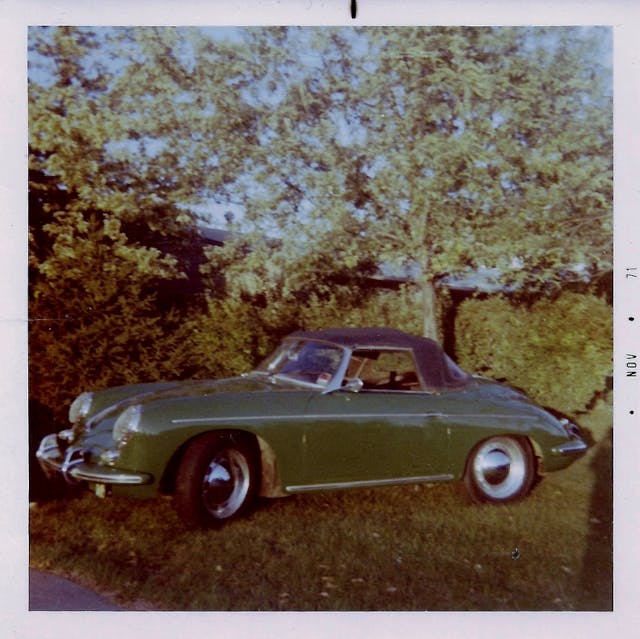
It was a 1960 356B Roadster. It was painted a pale yellow, but he quickly did some refurbishing and it was painted dark green in the process, at a little body shop in downtown Rock Island. Eventually the Boss went away when he started working for the family insurance company, and he got a Gran Torino company car. But the Porsche stayed. Those old 356s had really made an impression on him.

At that time, in the Midwest in the early ’70s, Porsche 356s could be had cheaply in running-but-rusted condition. This led to a series of parts cars that graced the lot behind my mother’s parents’ house. Then a couple years later he bought a rather rare 1951 356 Cabriolet, in running but less than pristine shape.
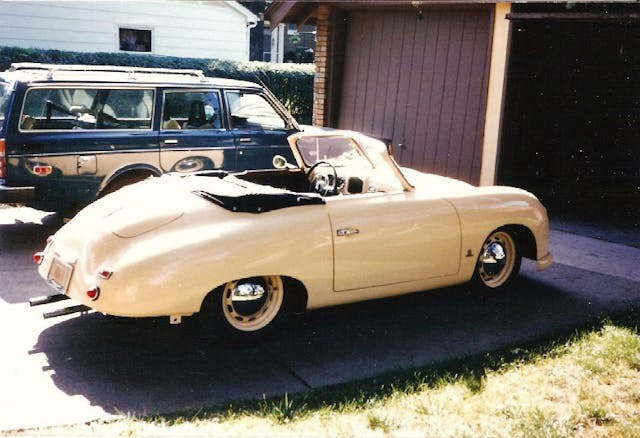
As time went by, my folks got married, and the green Roadster was replaced with a white 356C coupe. The ’51 Cab remained in the fleet. By the time I entered stage left, the C was gone but the green ’51 was still present and accounted for. In the mid ’80s, Dad finally decided to restore the ’51, which led him to John Ringier, who worked in the body shop at the local Pontiac-Buick dealership.

As early 356 parts were not easy to find, the restoration didn’t include all of the trim bits, but it looked good, and we had a lot of fun with it. Fun fact: The color he picked was a 1986 Volvo color, Cream Yellow. It looked good on the 356, and it was kind of cool because my mom’s 1986 240DL wagon was the same color. That wasn’t a coincidence.

But Dad missed that Roadster. I remember him saying the ’51 drove like a Model T compared to the ’60 Roadster, and he decided he was going to find one. In 1989 or ’90, the ’51 was sold to Michael Lederman, a super nice guy and total car nut who was also in the 356 Registry (as is my dad—since at least 1974). Lederman had several 356s at the time and was a New Yorker living in Italy.
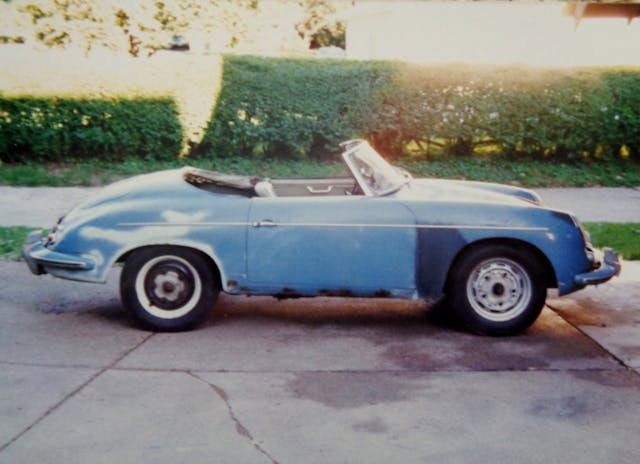
Dad located a ’60 356 Roadster right here in Rock Island, Illinois. It was in a garage attached to a former doctor’s office just down from Augustana College and was sharing space with two 1955–58 356 Speedsters and a 911 of late ’60s vintage. I was in second grade at the time. It was early summer 1988.

By this time Dad and John Ringier were great friends, and Ringier agreed to restore the new Roadster. It had been in the garage for 20 years and had no engine. As it turned out, it was pretty rusty, as the garage’s roof leaked, soaked into the concrete floor, and evaporated through the car. But Dad had to have it, and he got it.

The car spent a few weeks in the garage at home while he cleaned it up and tinkered with it. It was going to need new floors, and due to a big dent up front, a new nose as well. Many, many items were purchased through the 356 Registry, Stoddard, and elsewhere. The basement and Dad’s workshop downstairs began to fill with new and NOS Porsche parts. I do want to add that my mom was very, very patient throughout this project!

The first thing Ringier did was make a rotisserie for the body, so it would stay in one piece while the straggling remains of the original floors were removed and the new ones attached. Metal braces were spot-welded to the door frames. John was meticulous.

Of course, I was an impatient little kid at the time and wondered what the heck was taking so long. But slowly and surely, the restoration moved forward. My dad and my brother and I would stop by the garage frequently to see how things were progressing.

Soon, all the rust was cut out. New floors. New nose cone attached. Dad’s friend John Kraus, who ran a Porsche-VW repair shop—Northeast Auto in Davenport—handled getting the engine. We stopped out at his shop pretty regularly as well.

It took time. But Dad wanted it done right and was in no hurry. Ringier worked on the car as time permitted, in his own garage, which was outfitted with everything he needed to bring the 356 back.
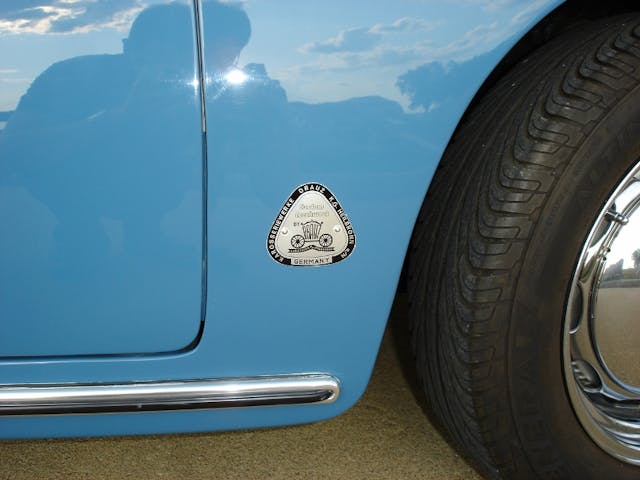
Finally, it was all pieced together again, and the engine and transaxle were installed, and the car became a running, primered shell. It had lights, signals, and all body panels attached, but no trim or windshield.
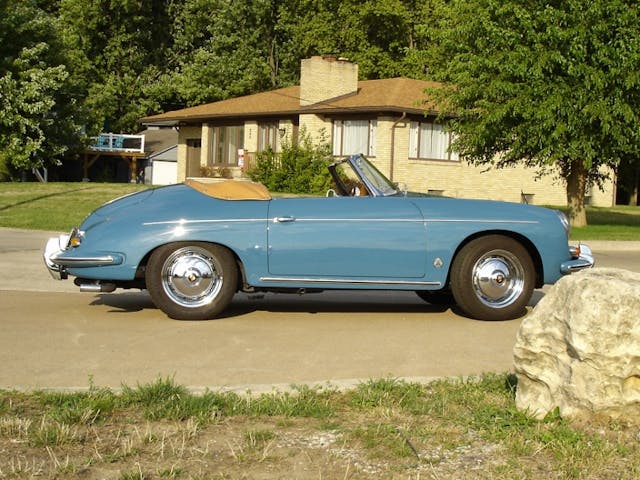
It made for a lot of double takes when Dad would take me and my brother Andy for rides. Kraus told Dad to drive it a bit to make sure everything mechanical was working correctly before getting it painted and 100 percent reassembled. Dad even drove it to the office that way a couple of times.

Finally, in early 1995, the car was repainted in the paint booth at Key Auto Mall. It was repainted in its original color, Aetna Blue. It’s a somewhat rare color on 356s, but my dad loved the color. I do too. He changed the interior from the original light gray to saddle tan leather, though. It was originally sold new in Chicago, and when we first brought it home, it had a 1968 Illinois plate on the back. The odometer read just 46,000 miles.
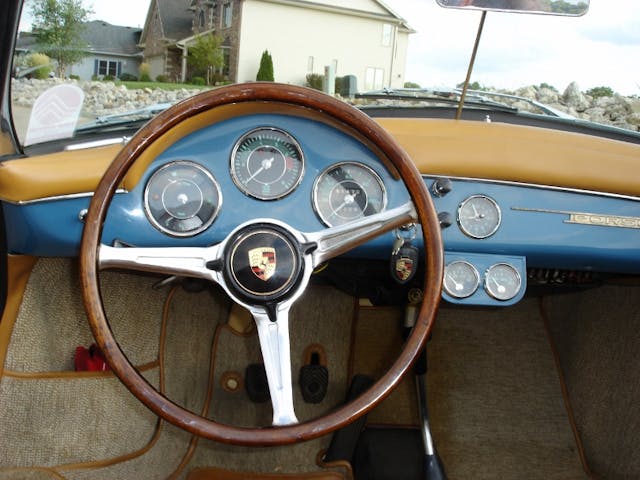
The 356B Roadster was only made from 1960–62. It replaced the 356A Convertible D, which more or less replaced the famous 356 Speedster but added a taller (but still removeable) windshield, roll-up windows instead of side curtains, and a taller convertible top. Only 2902 were made during those three model years, with 561 1960 models being built.
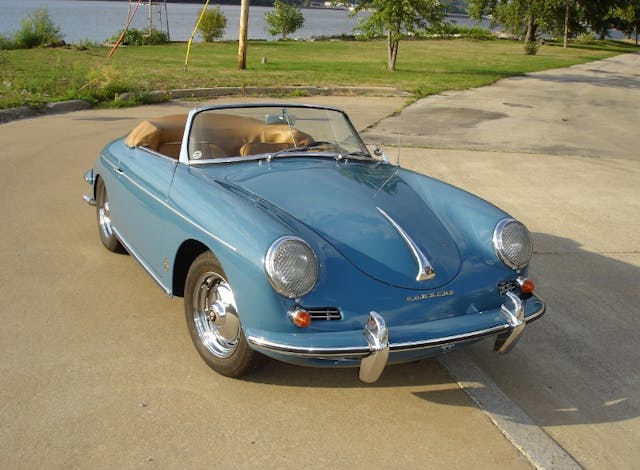
By the end of 1995, the Roadster was officially complete, and it looked gorgeous. Dad was thrilled. And this was not going to be a trailer queen! He wanted to drive it. And drive it he did. We usually took it to the Tweeks all-Porsche show in Effingham, Illinois, every year, until they stopped having the event. He took it to a few local shows as well, but it got kind of old just sitting in a patio chair next to it and having people ask what year that Karmann Ghia was. He’d rather drive it.
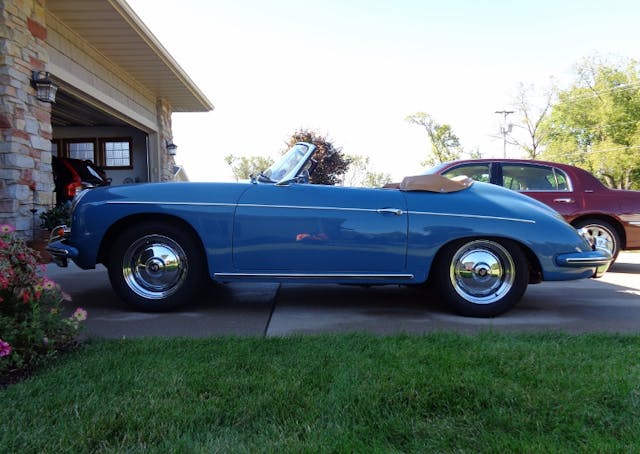
And he still does, although these days he also has a 1967 Volvo 1800S and my mom’s ’95 Jag XJS convertible to compete for attention, along with his late-model 911 daily driver. But the Roadster is special. It truly is a member of the family. Dad, this one’s for you!

